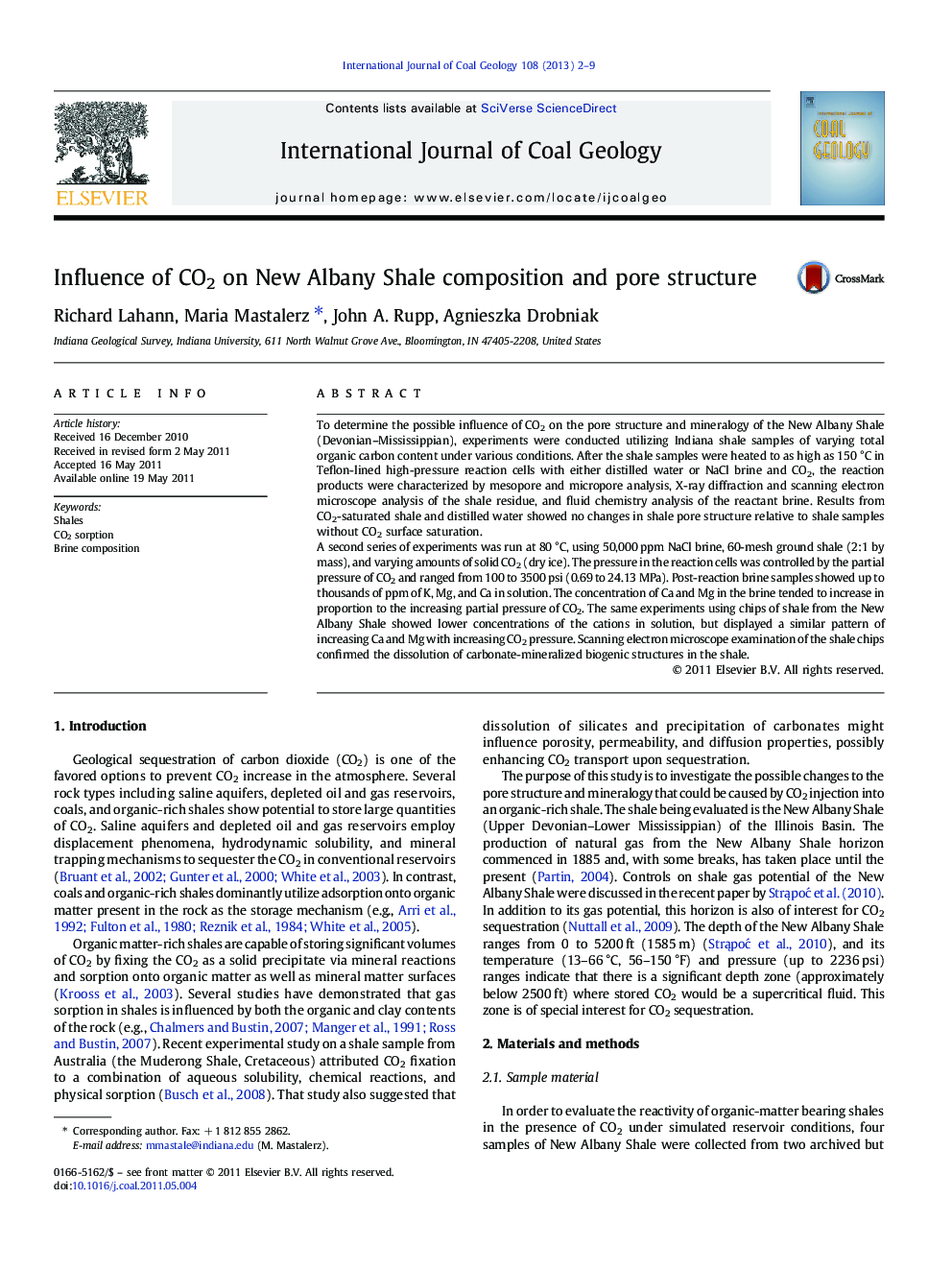| Article ID | Journal | Published Year | Pages | File Type |
|---|---|---|---|---|
| 1753410 | International Journal of Coal Geology | 2013 | 8 Pages |
To determine the possible influence of CO2 on the pore structure and mineralogy of the New Albany Shale (Devonian–Mississippian), experiments were conducted utilizing Indiana shale samples of varying total organic carbon content under various conditions. After the shale samples were heated to as high as 150 °C in Teflon-lined high-pressure reaction cells with either distilled water or NaCl brine and CO2, the reaction products were characterized by mesopore and micropore analysis, X-ray diffraction and scanning electron microscope analysis of the shale residue, and fluid chemistry analysis of the reactant brine. Results from CO2-saturated shale and distilled water showed no changes in shale pore structure relative to shale samples without CO2 surface saturation.A second series of experiments was run at 80 °C, using 50,000 ppm NaCl brine, 60-mesh ground shale (2:1 by mass), and varying amounts of solid CO2 (dry ice). The pressure in the reaction cells was controlled by the partial pressure of CO2 and ranged from 100 to 3500 psi (0.69 to 24.13 MPa). Post-reaction brine samples showed up to thousands of ppm of K, Mg, and Ca in solution. The concentration of Ca and Mg in the brine tended to increase in proportion to the increasing partial pressure of CO2. The same experiments using chips of shale from the New Albany Shale showed lower concentrations of the cations in solution, but displayed a similar pattern of increasing Ca and Mg with increasing CO2 pressure. Scanning electron microscope examination of the shale chips confirmed the dissolution of carbonate-mineralized biogenic structures in the shale.
Research Highlights► Heating of CO2-saturated shales does not change the shale porosity. ► Carbonate minerals enter solution when contacted by CO2-enriched fluids. ► The first responses to injection of CO2 into a New Albany Shale reservoir is expected to be carbonate dissolution.
